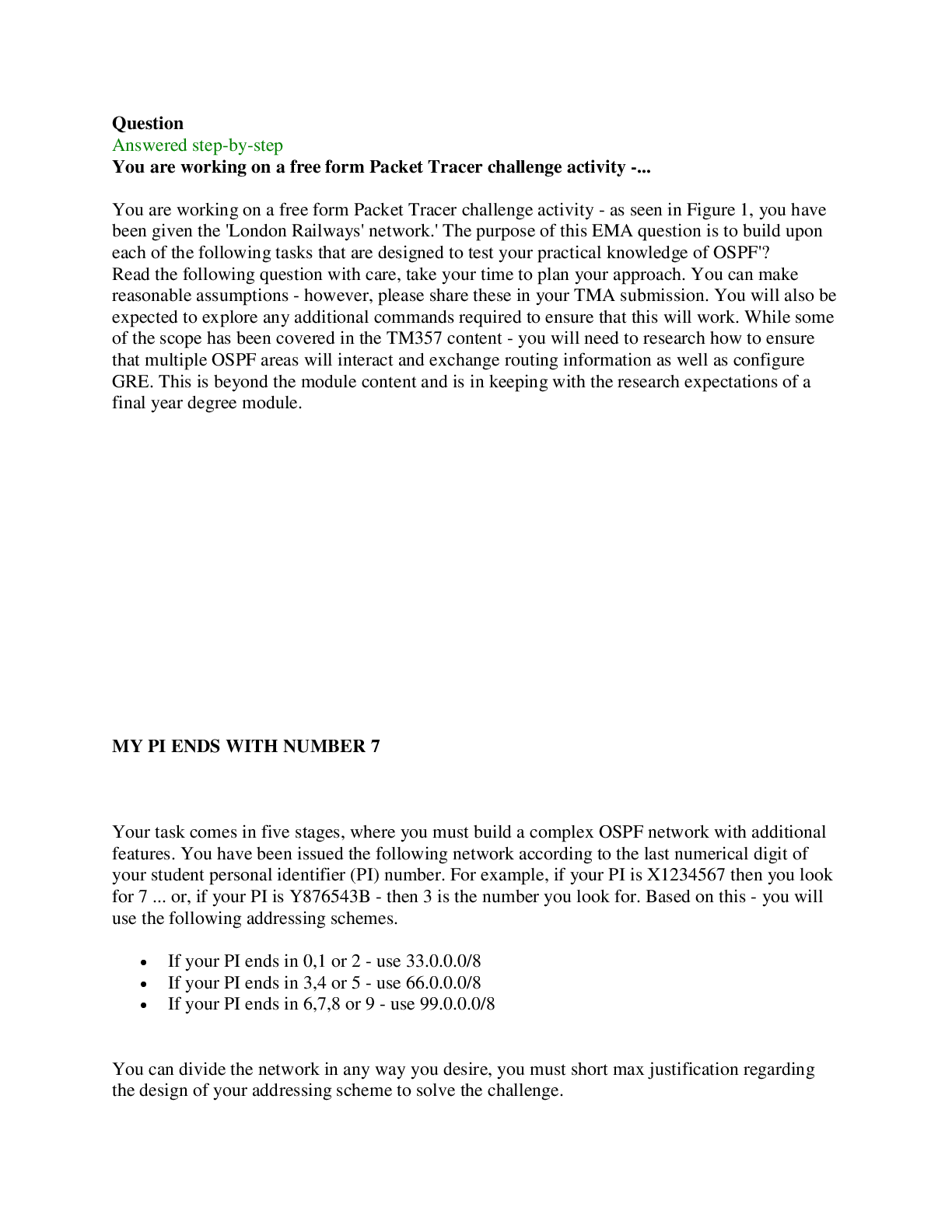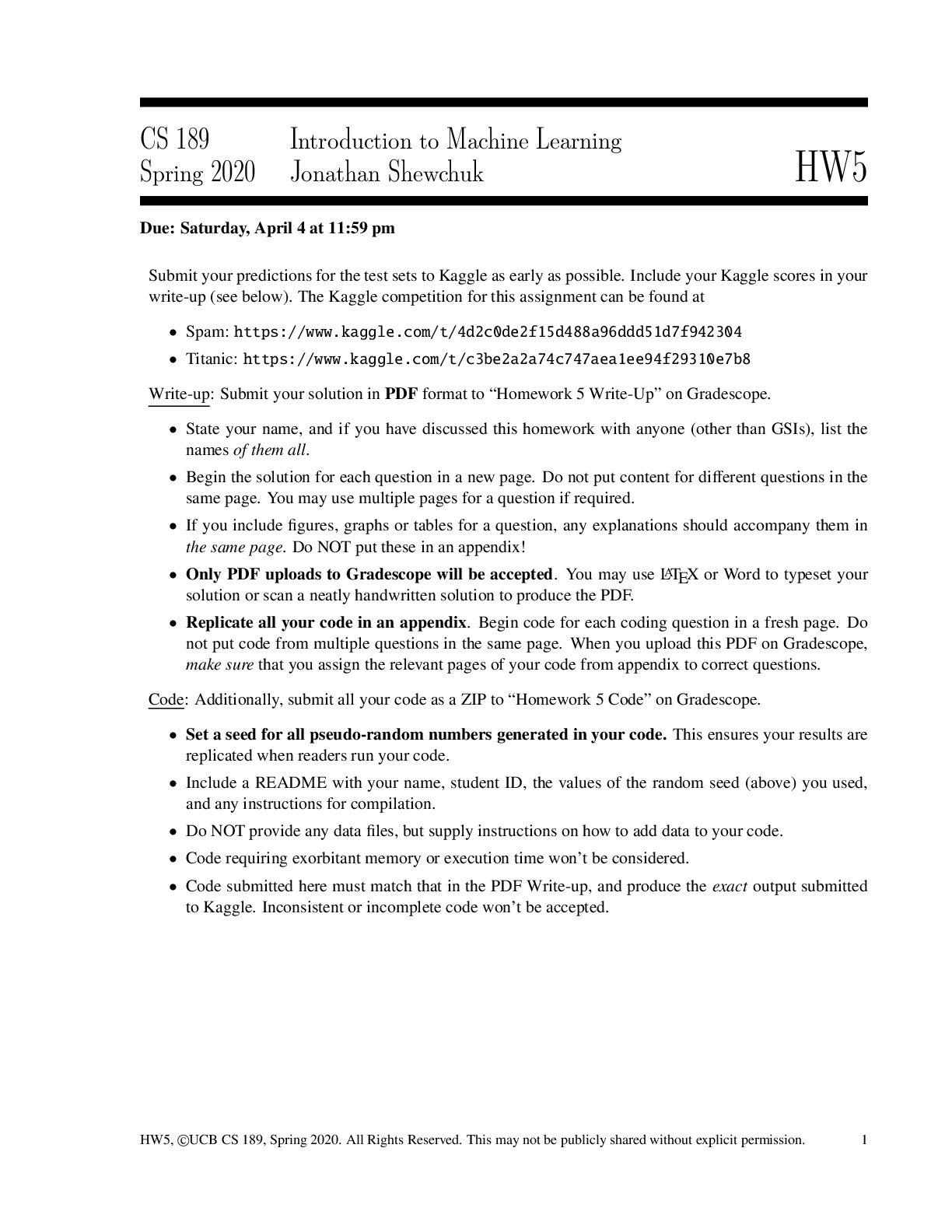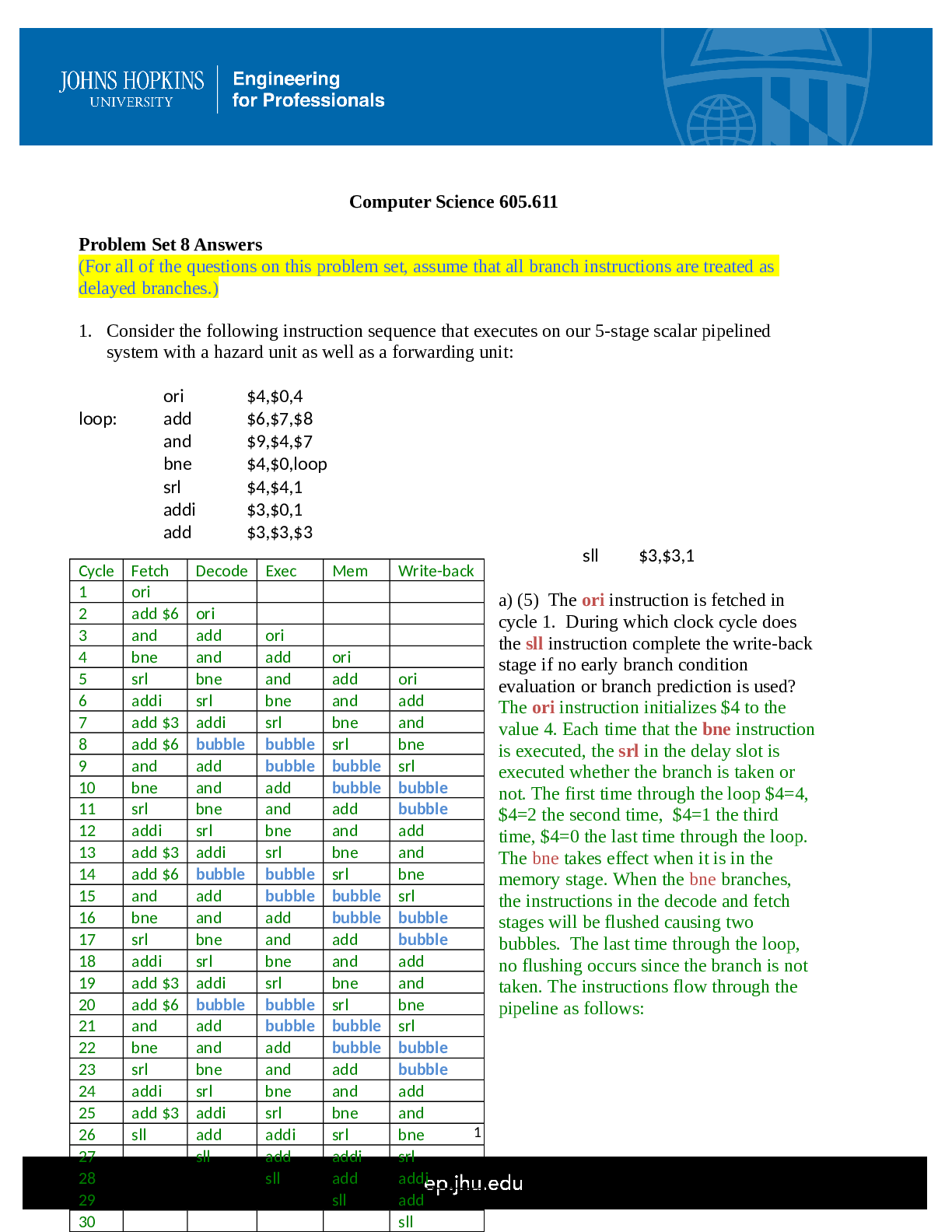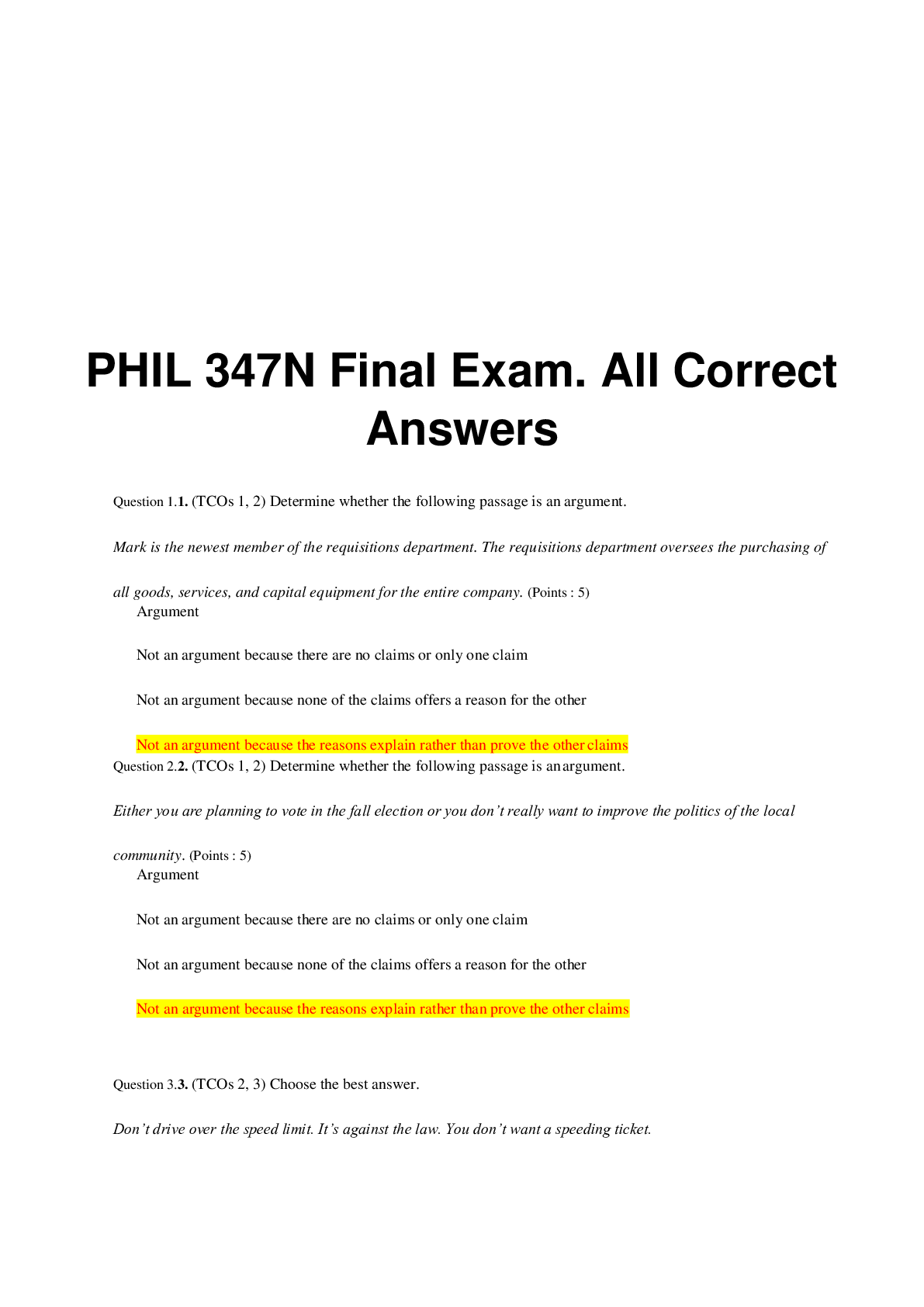Macroeconomics > QUESTIONS & ANSWERS > AP Macroeconomics (All)
AP Macroeconomics
Document Content and Description Below
1. As an example of a price index, consider the A.C.D.P.I. (a fictitious price index). The associated basket of goods is: Good Quantity Price Coffee 3 lb $8/lb Bread 3 loaves $1/loaf Tea 1 lb $15... /lb Aspirin 1 200-tablet bottle $2/bottle Cola 1 case $6/case A. If the price of coffee doubles, what is the resulting percentage change in the price level? (2 points) The resulting percentage change is 48% B. If the price of bread doubles, what is the resulting percentage change in the price level? (2 points) The resultant percentage change is 6% C. Why is the effect of a 100% increase in the price of coffee so much greater than the effect of a similar change in the price of bread? (4 points) Coffee costs a lot more, so it would increase by $8 bringing the total price of coffee to $16 dollars, whereas bread would only increase by $1, bringing the total price to $2. D. Assume that the mix of goods in a basket is kept constant for long periods. If the price of one good rises very rapidly over several years, what will happen to the relative importance of the other goods in the basket? Is this a problem? (6 points) The other goods will not be affected much because they are all independent. For example, if the price of gasoline went up significantly, the price level and the total price would change for that year, but it would not affect the other goods in the unless they were substitutes for the good that drastically changed in price. This is not a problem since changing the price of one good drastically would only affect the price total and price level, not the other goods in that basket if they were not substitutes for the good. E. If the price of coffee increases, we get a positive rate of inflation, even if no other price rises. Is this really inflation? Explain. (6 points) This is not really inflation, because only one price has increased, and inflation is defined as a general increase in many, but not all prices. So the increase in price of coffee could be caused by another factor such as a quality change or substitute goods and may not be inflation. Coffee could also be a volatile good. 2. In 1997, the price of a particular basket of goods was $2,900. In 1998, the price of the same basket was $3,300. In 1996, the base year, the price of the basket was $2,500. (Hint: price index is price indexed to a base year.) A. Calculate price index for 1996, 1997, and 1998. (3 points) The price index for 1996 = 2500/2500 *100 = 100 The price index for 1997 = 2900/2500 *100 = 116 The price index for 1998 = 3300/2500 *100 = 132 B. Calculate inflation rates for 1996-97 and 1997-98. Is inflation increasing or decreasing (2 points) The inflation rate from 1996-1997 is 16%. The inflation rate from 1997-1998 is 14% Inflation is decreasing because disinflation is happening. You buy a certificate of deposit (CD) that pays a nominal rate of 12% annually. You have a tax rate of 25%, so if the interest on this CD is taxable (which it may not be) your after-tax nominal rate is (1 – 25%) 12% = 9%. Since 10% equals .1, we can rewrite the equation as: (1 – .25) .12 = .09. For parts (A-C), the nominal rate if 12%, annually and the after-tax nominal rate is 9%. A. If the inflation rate is 6% and interest on this CD is not taxable, what is the real interest rate on the CD? Hint: What is the relationship between the real rate of interest and the nominal rate of interest? (2 points) The real rate is (12-6) 6%. B. If the inflation rate is 6% and the interest on this CD is taxable, what is the real interest rate on the CD? (2 points) [Show More]
Last updated: 2 years ago
Preview 1 out of 7 pages

Buy this document to get the full access instantly
Instant Download Access after purchase
Buy NowInstant download
We Accept:

Reviews( 0 )
$7.00
Can't find what you want? Try our AI powered Search
Document information
Connected school, study & course
About the document
Uploaded On
Aug 11, 2022
Number of pages
7
Written in
Additional information
This document has been written for:
Uploaded
Aug 11, 2022
Downloads
0
Views
92

























